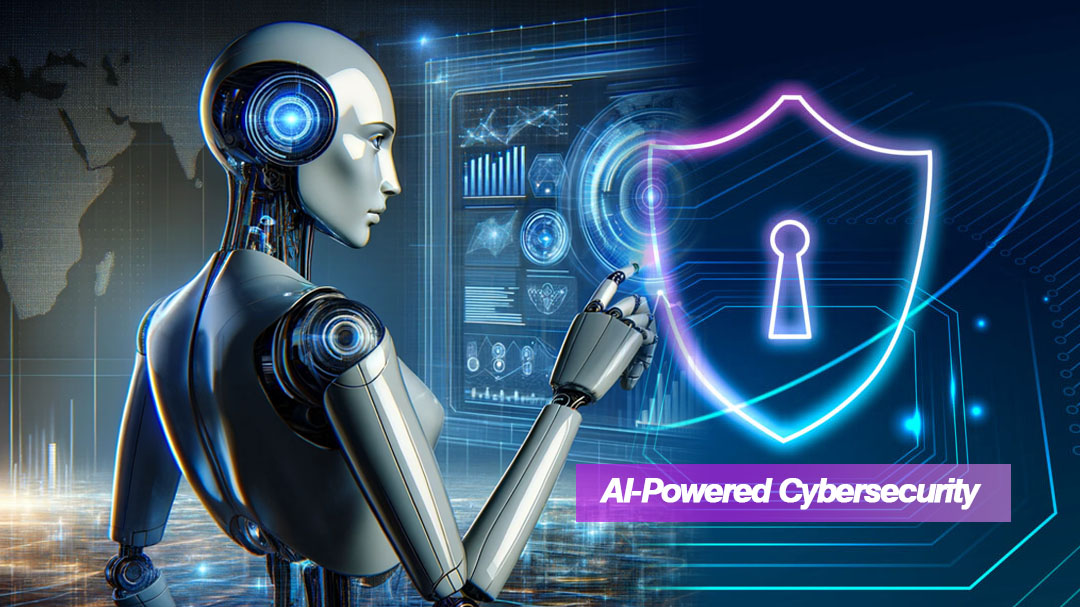Build a Django Discussion Forum: Step-by-Step Tutorial
Learn how to build a complete Django discussion forum with anonymous posting, user interactions, and...
Get instant access to the latest tech news, reviews, and programming tutorials on your device!
🔍 Search Latest International Tech News, Reviews & Programming Tutorials
Learn how to build a complete Django discussion forum with anonymous posting, user interactions, and...
These AI tools offer a range of functionalities to enhance the creative process for vloggers....
NASA astronaut Sunita Williams is returning to Earth with SpaceX’s Crew Dragon, utilizing advanced splashdown...

Discover how AI-powered cybersecurity is transforming threat defense for US businesses in 2025. Learn about generative AI tools, enterprise solutions, and implementation strategies to protect against advanced cyber attacks.
The cybersecurity landscape in the United States has reached a critical inflection point in 2025. As cyber threats evolve with unprecedented sophistication, American enterprises are turning to AI-powered cybersecurity solutions to defend against attacks that traditional security measures simply cannot detect. With industry executives ranking AI and GenAI in cybersecurity as the topmost trend out of more than 60 trends for 2025, this comprehensive guide explores how artificial intelligence is revolutionizing threat defense across American businesses.
American businesses face an alarming escalation in cyber threats. From ransomware attacks targeting critical infrastructure to sophisticated phishing campaigns leveraging deepfake technology, the threat landscape has evolved beyond traditional security capabilities. The average cost of a data breach in the US now exceeds $4.88 million, making cybersecurity investments not just prudent—but essential for business survival.
Key Threat Statistics for US Enterprises:
Traditional signature-based security systems are failing against modern threats. Cybercriminals now use artificial intelligence to create polymorphic malware that constantly changes its code signature, bypassing conventional detection methods. This arms race has made AI-powered cybersecurity not just an advantage—but a necessity.
Modern AI security systems analyze patterns across millions of data points in real-time, identifying anomalies that human analysts would miss. These systems can:
CrowdStrike has introduced Charlotte AI, a generative AI tool designed to boost productivity and effectiveness for security analysts. This platform represents the next generation of endpoint protection, offering:
Key Features:
Enterprise Benefits:
Recorded Future launched Recorded Future AI in October 2024, including a generative AI-based assistant that helps security teams access critical threat intelligence via a natural language interface. This innovation allows security teams to:
Almost eight in ten security leaders (76%) favored tools purpose-made for cybersecurity over domain-agnostic tools, highlighting the importance of specialized solutions. Leading platforms include:
Specialized AI Security Tools:
Infrastructure Evaluation: Before implementing AI-powered cybersecurity, businesses must assess their current security posture. This includes:
Regulatory Compliance Considerations: US enterprises must navigate complex compliance requirements including:
AI Tool Selection Criteria: When choosing the right GenAI tool, security leaders should prioritize purpose-built cybersecurity solutions. Key evaluation factors include:
Implementation Best Practices:
AI Governance and Oversight: 2025 will likely see many organizations introduce thorough AI governance guidelines to address concerns about AI hallucinations and data exposure. Essential governance elements include:
Over one-third of companies admit they are still grappling with shadow AI, unauthorized AI tools being used without IT approval. This phenomenon poses significant risks including data breaches and compliance violations.
1. AI Discovery and Inventory
2. Policy Development and Enforcement
3. Governance Framework Implementation
Quantum-Resistant Encryption: As quantum computing advances, AI-powered systems are being developed to implement post-quantum cryptography, ensuring long-term data protection against future quantum-based attacks.
Autonomous Security Operations Centers (SOCs): The next evolution involves fully autonomous SOCs where AI systems handle everything from threat detection to incident response with minimal human intervention.
Predictive Threat Intelligence: Advanced AI models are being trained to predict cyber attacks before they occur, allowing proactive defense measures rather than reactive responses.
Financial Services:
Healthcare:
Manufacturing:
Cost Reduction Metrics:
Operational Efficiency Gains:
Market Differentiation: Companies with advanced AI cybersecurity capabilities gain competitive advantages through:
The AI-powered cybersecurity revolution represents a fundamental shift in how American enterprises defend against modern threats. With 64% of cybersecurity and IT professionals either researching GenAI tools or having already purchased one, and 70% intending to make GenAI purchases within the next 12 months, the adoption curve is accelerating rapidly.
Organizations that proactively embrace AI-powered cybersecurity solutions will not only better protect their assets but also gain significant competitive advantages through enhanced operational efficiency and customer trust. The question is no longer whether to adopt AI cybersecurity, but how quickly and effectively businesses can implement these transformative technologies.
As cyber threats continue to evolve with AI-powered sophistication, American enterprises must respond with equally advanced defensive capabilities. The future of cybersecurity is here, and it's powered by artificial intelligence. Companies that act now will be best positioned to secure their digital assets and maintain competitive advantages in an increasingly connected world.
The investment in AI-powered cybersecurity isn't just about protection—it's about enabling secure digital transformation and ensuring business continuity in an era of unprecedented cyber risk. For US enterprises serious about long-term success, AI cybersecurity isn't optional—it's essential.
About the Author:This article was researched and written by cybersecurity experts specializing in AI-powered enterprise security solutions and US regulatory compliance.
Comments & Discussion